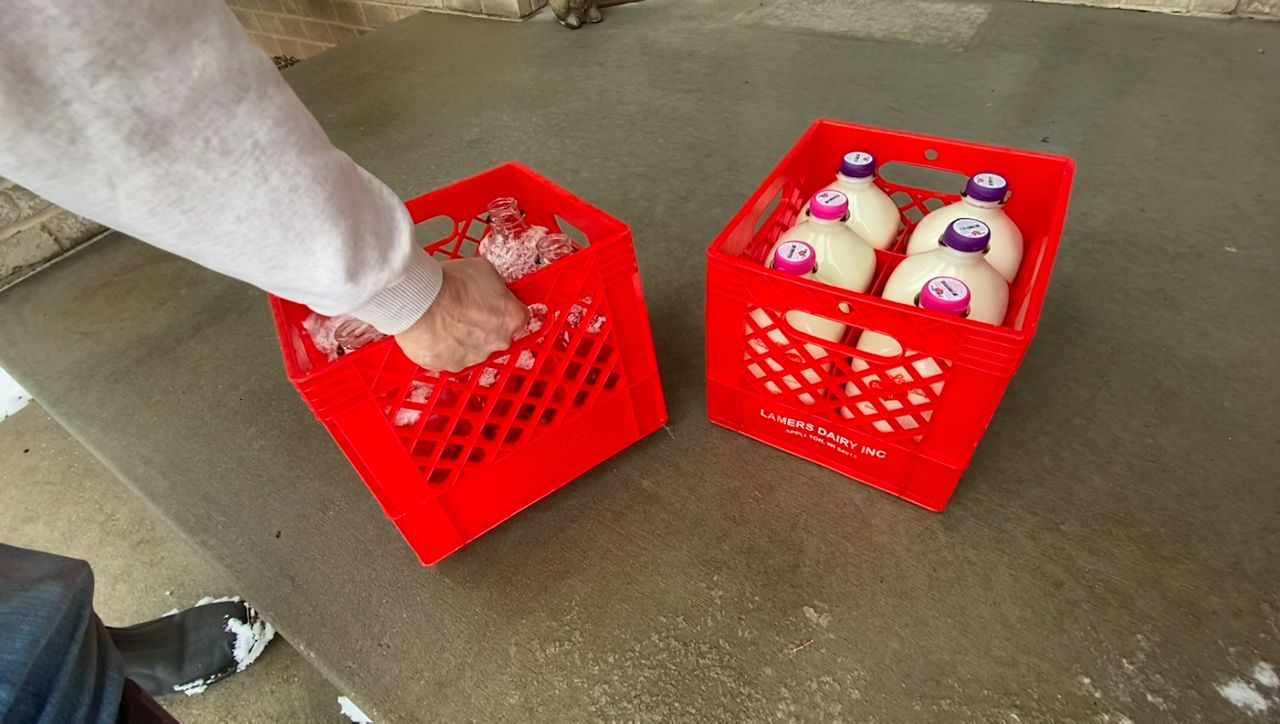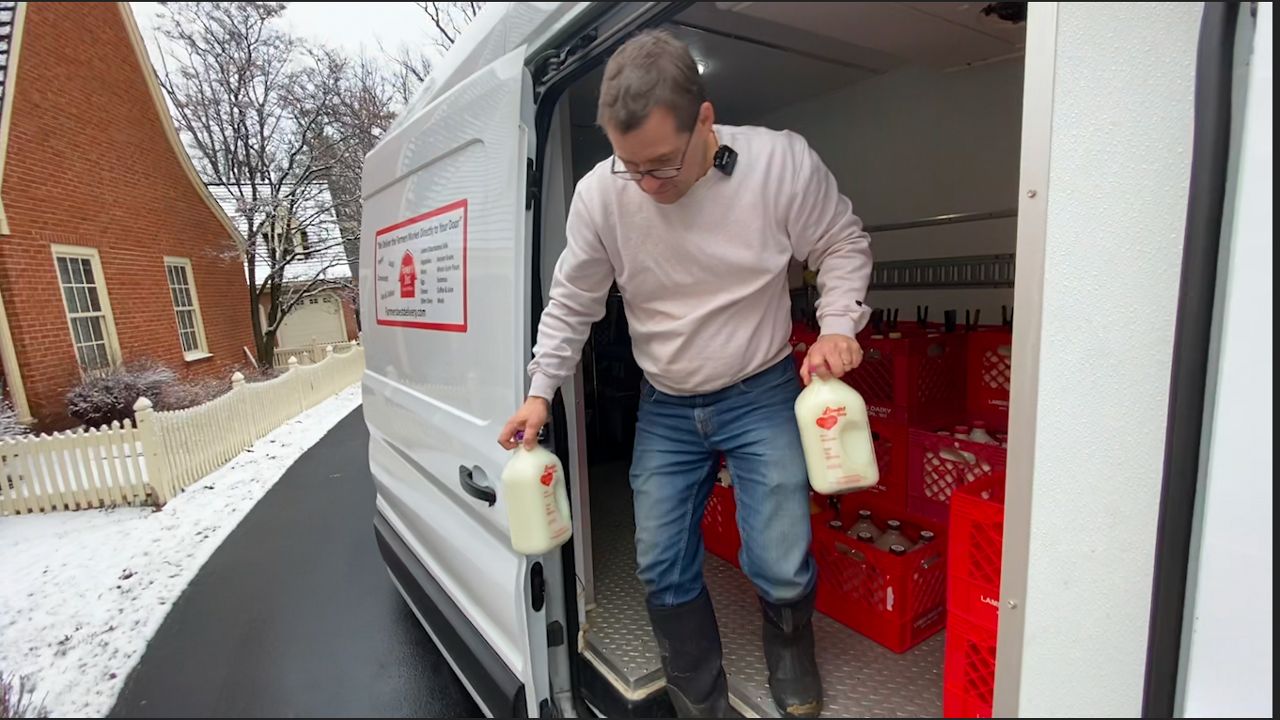LEDGEVIEW, Wis. — There’s a rhythm that develops as Brian Gronski moves from house to house delivering milk in glass bottles.
He scans the order before hopping in the back of the Farmer’s Best Home Delivery truck to find the bottles and other foods customers ordered.
With the assembled items in hands, he steps off the truck and heads toward the house to deliver the order.
“A lot of our customers still get it delivered to an old-fashioned milk box,” said Gronski, who owns Farmer’s Best Home Delivery with his wife Teri. “A lot of them get it to their coolers… or inside their garage to a refrigerator.”

Home milk delivery was once common, but in 2022, it’s unique.
“The difference is that 50 years ago the milk man delivered to 100 houses and he had maybe a six-mile route,” Gronski said while driving between stops in De Pere and Ledgeview near Green Bay. “Today, we’ll deliver to 80 customers and it will be a 120 mile route.”
Farmer’s Best's core delivery area is in Green Bay, the Fox Valley and Manitowoc.
In addition to milk from Lamers Dairy in Appleton, Farmer’s Best also offers a range of locally produced and sustainable foods for delivery.
Customer April Malo said part of the appeal of working with Farmer’s Best is the relationship with the drivers and the focus on sustainable foods.
“It’s person to person, basically the closest to farm to table,” she said. “We’re pretty sustainable and eat from our backyard most of the summer and fall here and this is the closest thing I can get to for dairy for that.”
Gronski said the foods are a key part of sustaining the dairy delivery.
“You can’t do the business like you once did it because it still costs money for every mile you travel, every hour you spend on the road,” he said. “To deliver two, or four, or six bottles of milk alone without the other products that we offer would be very difficult to sustain.”

Gronski said the business is about more than just work, it’s about helping his customers — who he knows by name — and offering small farmers another outlet for their products.
“There’s no need to transport food thousands of miles when we live in one of the most productive agricultural states in the nation,” he said.
